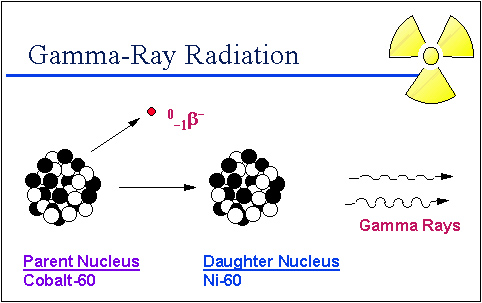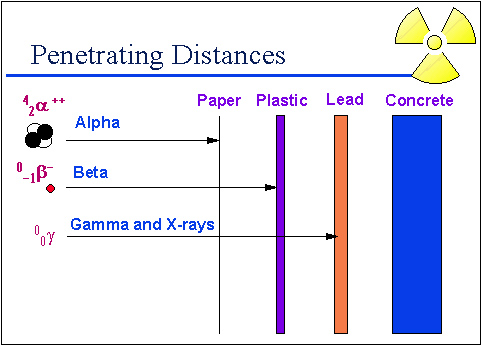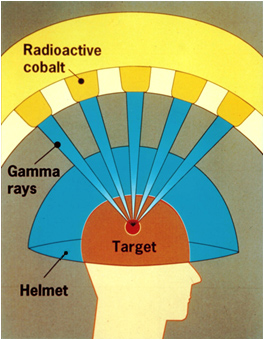

Gamma radiation (or gamma rays) are packets of electromagnetic radiation. The nuclei of unstable isotopes emit these packets during radioactive decay. Sometimes it accompanies alpha or beta particle emissions. Gamma rays are part of the electromagnetic spectrum, such as light and x-rays but are of much higher energy and much shorter wavelength.
Examples of gamma emitters are: cobalt-60, zinc-65, cesium-137, and radium-226.
Gamma rays have no mass or charge and interact less intensively with matter than ionizing particles. Gamma rays lose energy slowly so they are able to travel very, very long distances. Gamma rays from the sun are able to reach the earth's atmosphere before they are blocked from reaching the surface of the earth.
A gamma ray can be written two ways:


Source: Gamma radiation, University of Michigan Student Chapter of the Health Physics Society
Gamma rays have a high penetrating power, which means they can pass through many of the substances which can block beta or alpha particles.

Source: Penetrating distances, University of Michigan Student Chapter of the Health Physics Society
Gamma radiation is only blocked by dense materials such as lead (the denser the material, the more chance that a gamma ray will interact with atoms in the material). Gamma radiation particularly can present a hazard from exposures external to the body.
The image below was produced from a camera which uses gamma ray radiation. Because the gamma rays pass through the truck's sides, you can see the people and cargo inside the truck.

Source: A gamma ray photograph of a transport truck. Canadian Nuclear Association, Original image
Gamma radiation is also used to fight cancer. Since the radiation can penetrate tissue and kill cells, a procedure called "gamma knife" surgery directs the gamma rays directly into cancerous cells. Too much exposure to gamma radiation can actually cause cancer.

Source: Gamma Knife, NRC, Wikimedia commons